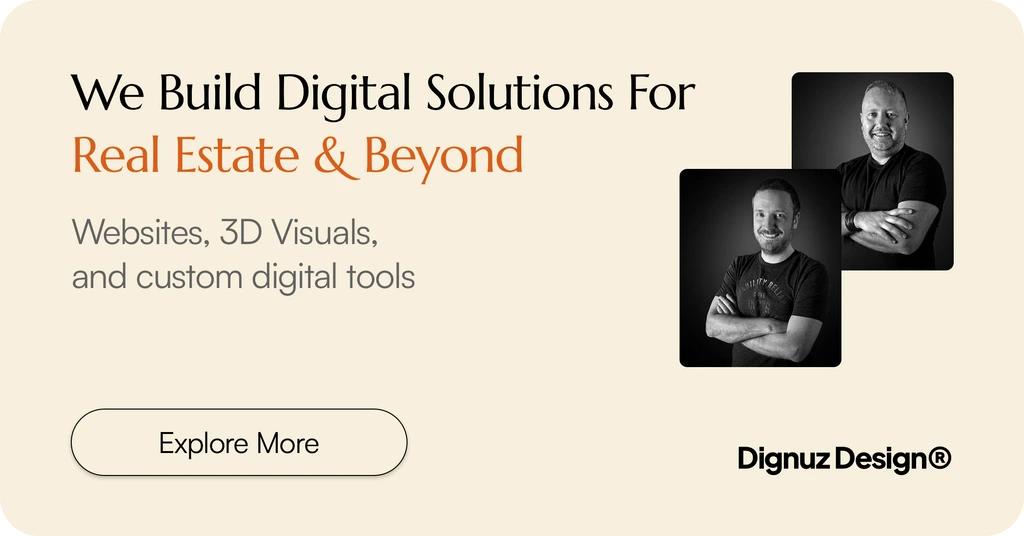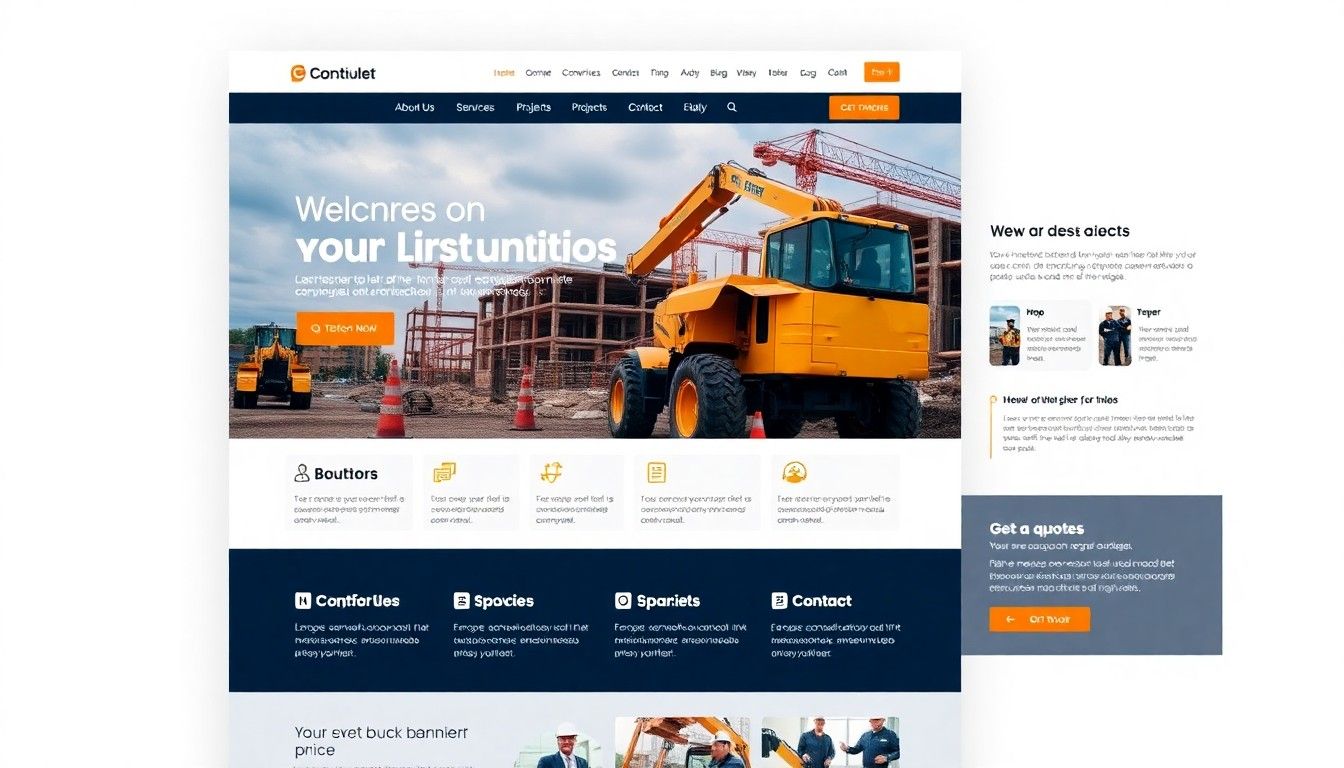How to Build an Effective Nonprofit Website

We get it - you're running a nonprofit with a mission that could change the world, but your website looks like it was built when dial-up was still a thing. You're not alone in this struggle! Many nonprofit organizations face the same challenge: creating a professional, engaging website that drives donations and volunteer sign-ups without breaking the bank.
Your website isn't just a digital business card - it's your organization's most powerful tool for storytelling, fundraising, and community building. A well-designed nonprofit website can increase donations by up to 200% and significantly boost volunteer engagement (Source: Neon One). The good news? You don't need a Fortune 500 budget to create something amazing.
This guide covers 20 practical strategies that'll transform your nonprofit website from "meh" to "wow!" We'll walk through everything from design fundamentals to donation optimization, plus share some insider tips we've learned from helping organizations just like yours. Ready to build something that actually moves the needle? Let's make some magic happen!
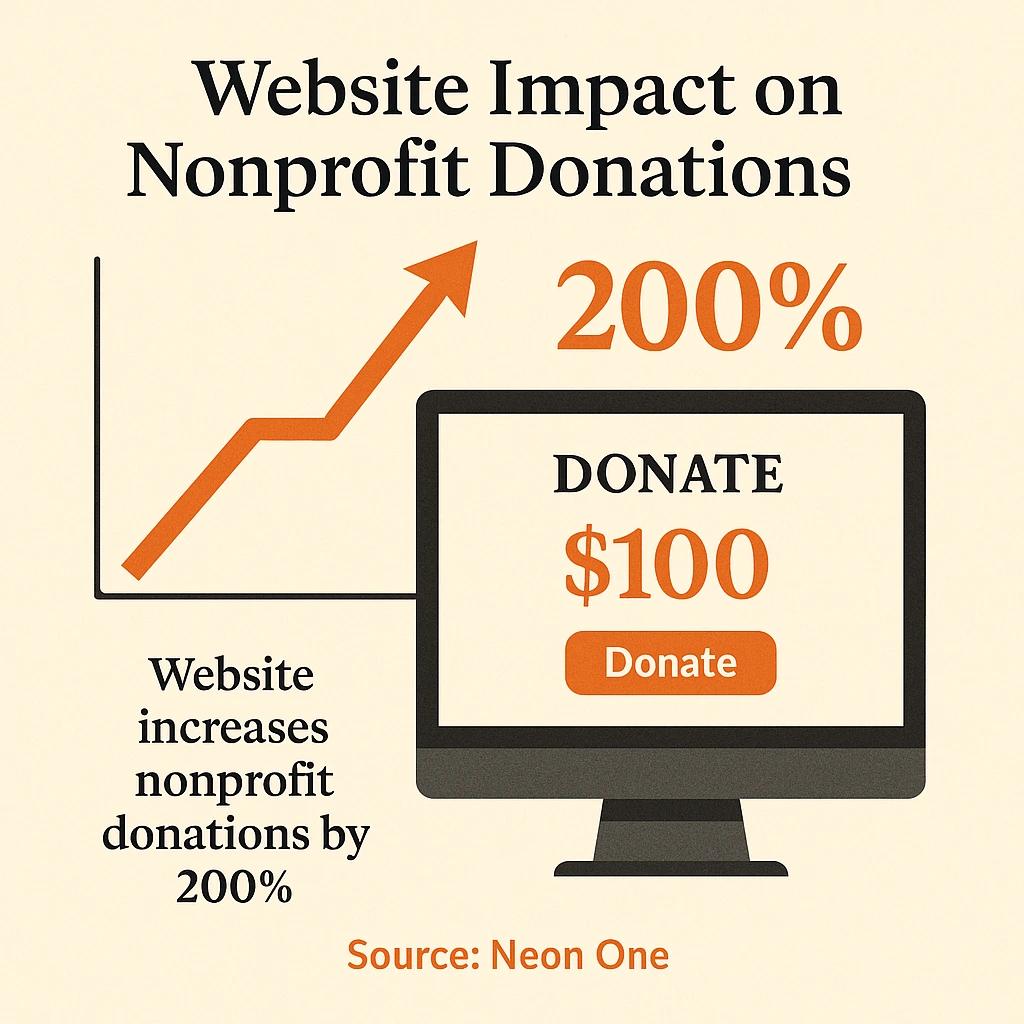
Foundation Elements: Getting the Basics Right
Before we jump into the fun stuff, let's nail down the essentials. Think of these as the foundation of your digital home - get these right, and everything else becomes so much easier. We've seen too many nonprofits skip these basics and wonder why their beautiful website isn't converting visitors into supporters.
The most critical element? That donate button needs to be impossible to miss. Position it prominently in your main navigation using a contrasting color that meets accessibility standards with a minimum 4.5:1 contrast ratio (Source: Neon One). Don't be shy about it - this button is your lifeline!
Prominent Donate Button
- Why It Matters: Primary conversion goal
- Quick Implementation Tip: Use contrasting brand color, place in header
Clear Mission Statement
- Why It Matters: Immediate visitor understanding
- Quick Implementation Tip: One sentence, above the fold
Contact Information
- Why It Matters: Builds trust and accessibility
- Quick Implementation Tip: Footer minimum, dedicated contact page ideal
Search Functionality
- Why It Matters: Improves user experience
- Quick Implementation Tip: Simple search bar in header or sidebar
Your homepage hero needs to pack a punch too. We're talking compelling imagery paired with clear, evocative messaging that immediately communicates your mission and value proposition. Skip the stock photos of people in suits shaking hands - show your real impact in action. When visitors land on your site, they should instantly understand what you do and why it matters.
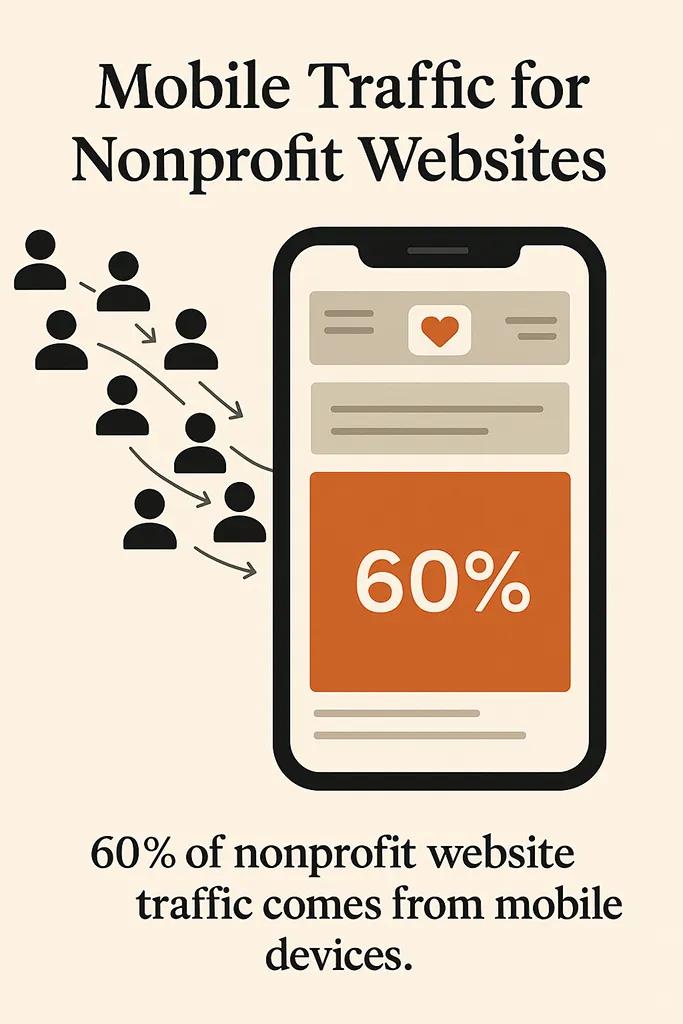
Mobile-First Design and Accessibility
Here's something that might surprise you: over 60% of nonprofit website traffic comes from mobile devices. Yet we still see organizations launching websites that look great on desktop but are practically unusable on phones. That's like having a gorgeous storefront that locks out half your potential customers!
Mobile optimization isn't just about making things smaller - it's about reimagining the entire user experience. Every element needs to be touch-friendly, readable, and fast-loading. This means buttons that are easy to tap, forms that don't require a magnifying glass to complete, and images that load quickly even on slower connections (Source: Neon One).
Accessibility goes hand-in-hand with mobile design, and frankly, it's not optional. We need to serve ALL users effectively, which means high-contrast colors, alt text for images, keyboard navigation, readable fonts, and accessible forms. Think of accessibility as expanding your potential supporter base - because that's exactly what it does.
Touch-optimized buttons
- Impact on User Experience: Prevents frustration, increases conversions
- Implementation Priority: High - affects all interactions
Readable font sizes
- Impact on User Experience: Reduces bounce rate
- Implementation Priority: High - affects content consumption
Alt text for images
- Impact on User Experience: Screen reader compatibility
- Implementation Priority: Medium - impacts accessibility compliance
Keyboard navigation
- Impact on User Experience: Serves users with motor disabilities
- Implementation Priority: Medium - required for full accessibility
Don't forget about loading speed - a slow website can drive away potential donors before they even see your amazing work. Optimize images, compress files, and choose a reliable hosting provider. Your future supporters' patience (and your donation numbers) will thank you.
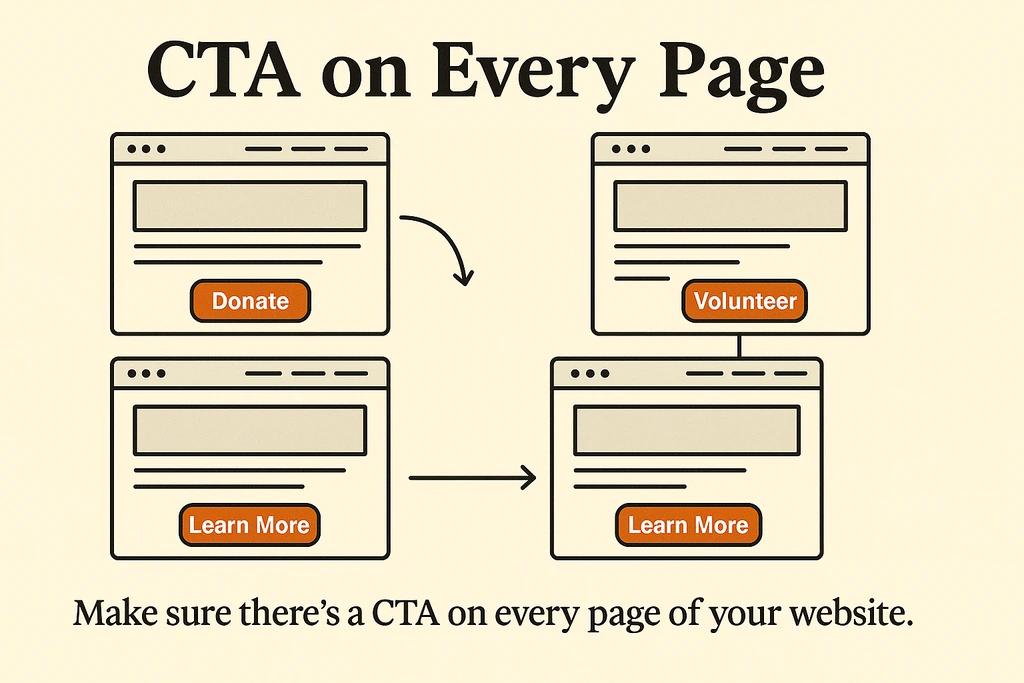
Content Strategy That Converts
Content is where the magic really happens. Your website needs to tell a story that connects emotionally with visitors while providing clear pathways to action. We've found that the most successful nonprofit websites balance heart-tugging stories with practical information and crystal-clear calls-to-action.
Start with your mission-focused design approach. Use custom branding elements that reinforce who you are while keeping layouts clean and vibrant according to your audience's preferences. Your story should be woven throughout the site, not just relegated to an "About Us" page that nobody reads (Source: OneEach Blog).
Here's where many nonprofits stumble: they forget to include clear calls-to-action on every page. Whether it's "donate," "volunteer," or "learn more," each page should guide visitors toward meaningful engagement. Make these CTAs stand out with contrasting colors and compelling copy that speaks to your audience's motivations.
- Use storytelling to create emotional connections with your cause
- Include specific impact metrics ("We've served 1,200 meals this month")
- Feature testimonials from beneficiaries, volunteers, and donors
- Create dedicated pages for different audience segments
- Maintain an active blog with regular impact stories and updates
Real-world impact should be front and center. Show statistics, share beneficiary stories, and don't be afraid to get specific about how donations are used. Transparency builds trust, and trust drives donations. Consider our approach at Dignuz Design - we always show clients exactly how their investment translates into measurable results.
Technical Features and Functionality
Now for the behind-the-scenes magic that makes everything work smoothly. The technical foundation of your nonprofit website needs to be solid, secure, and scalable. We're talking about the systems that'll keep your site running smoothly while you focus on changing the world.
Integration is key here. Your events calendar should automatically sync with your event management system, your donation forms should connect seamlessly with your donor database, and your volunteer sign-up forms should feed directly into your CRM. Nobody has time for manual data entry when there are missions to accomplish!
Automated event calendar sync
- Business Benefits: Reduces manual work, prevents errors
- Implementation Complexity: Medium - requires API integration
Secure donation processing
- Business Benefits: Builds donor confidence, ensures compliance
- Implementation Complexity: Low - use trusted third-party processors
CRM integration
- Business Benefits: Streamlines donor management
- Implementation Complexity: High - requires custom development
Email newsletter signup
- Business Benefits: Builds ongoing engagement
- Implementation Complexity: Low - most platforms offer simple widgets
SSL certificate
- Business Benefits: Security and search engine ranking
- Implementation Complexity: Low - usually one-click installation
Security cannot be an afterthought. SSL certificates, regular backups, and secure donation processing aren't just nice-to-haves - they're essential for protecting your donors' information and maintaining their trust. When we set up websites for our clients, security is always step one, not step last.
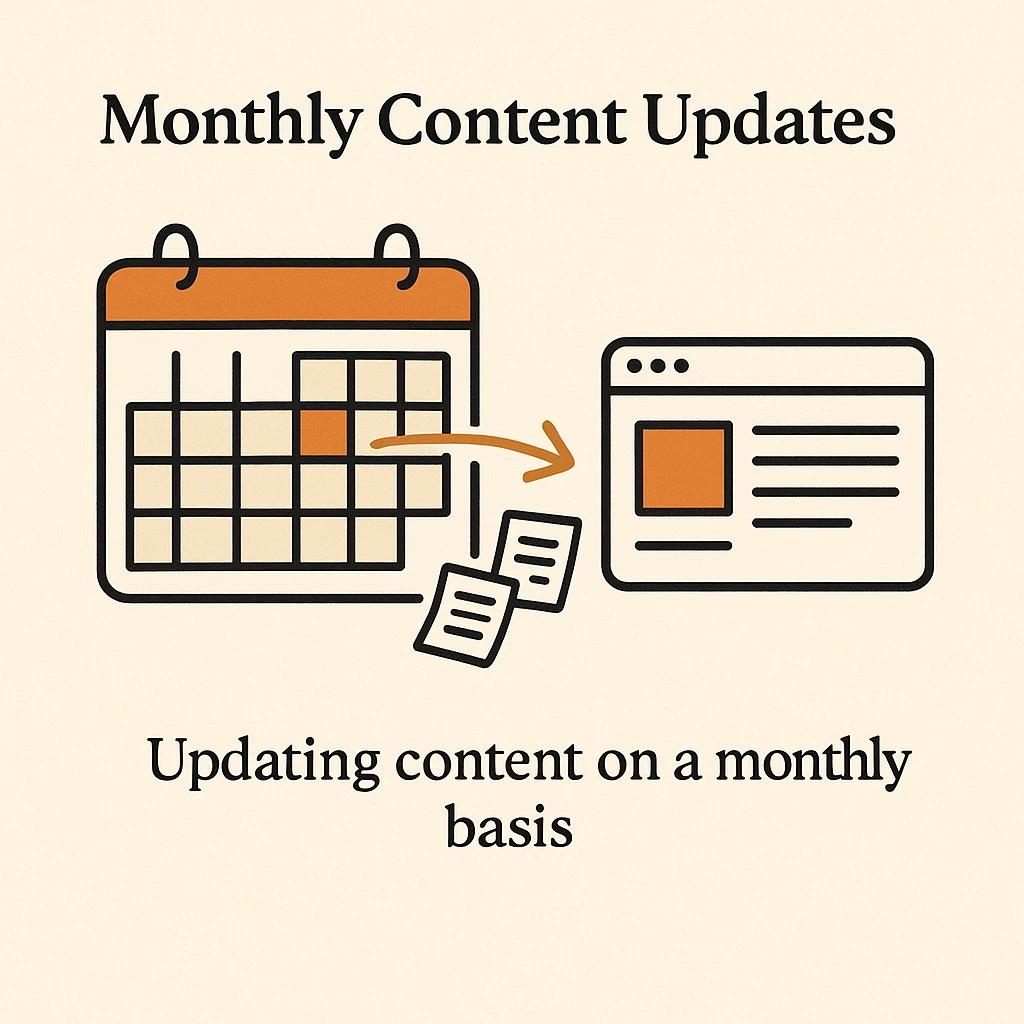
SEO and Content Optimization
Here's where we get a bit nerdy, but trust us - this stuff matters! Search engine optimization helps people find your cause when they're looking for ways to make a difference. The good news is that nonprofit SEO doesn't require any sketchy tactics - it's all about creating genuinely helpful content that serves your community.
Start by identifying keywords related to your specific cause and community needs. Think beyond generic terms like "charity" - focus on specific phrases like "food insecurity solutions" or "local animal rescue" that match how people actually search. Include these naturally in your page titles, headings, and first paragraphs (Source: NonProfit PRO).
Content creation should focus on answering questions your potential supporters might have. What problems does your organization solve? How do donations make a difference? What volunteer opportunities are available? Write in clear, accessible language that newcomers to your cause can understand - save the industry jargon for internal meetings.
Local keywords
- Nonprofit-Specific Application: "homeless shelter Chicago" vs generic "homeless shelter"
- Expected Impact: Higher conversion rates from local supporters
Cause-specific terms
- Nonprofit-Specific Application: "animal rescue" + "pet adoption" + "no-kill shelter"
- Expected Impact: Attracts highly motivated visitors
Impact-focused content
- Nonprofit-Specific Application: Stories showing tangible results
- Expected Impact: Improved engagement and sharing
Regular blog updates
- Nonprofit-Specific Application: Fresh content about ongoing work
- Expected Impact: Better search rankings and donor retention
Don't forget about the technical SEO basics. Use tools like Google Analytics to track your progress and understand what content resonates with your audience. Regular updates, fast loading times, and mobile optimization all contribute to better search rankings.
Donation Optimization and Conversion
Let's talk about the elephant in the room - actually getting people to donate. We've seen beautiful nonprofit websites that barely convert because they make giving feel like filling out tax forms. Your donation process should be as smooth as ordering coffee from your favorite app.
Secure donation tools integrated directly into your site are non-negotiable. Use trusted fundraising platforms with simple workflows that make donors feel confident about their contribution. The fewer clicks between "I want to help" and "Thank you for your donation," the better your conversion rates will be.
Consider implementing multiple giving options - one-time donations, monthly giving, memorial donations, and corporate sponsorships. Different people prefer different ways to contribute, and your website should accommodate all of them. Just like how Webflow offers various subscription tiers, your donation options should cater to different supporter preferences and budgets.
- Offer multiple donation amounts with suggested giving levels
- Include recurring donation options with clear benefits
- Show exactly how donations will be used ("$50 provides meals for 10 families")
- Provide instant confirmation and recognition
Transparency in donation usage builds trust and encourages larger gifts. Show donors exactly how their contribution makes an impact - whether it's meals provided, animals rescued, or students educated. This isn't just good fundraising practice; it's good stewardship.
Ongoing Maintenance and Growth
Building your website is just the beginning - the real magic happens in the ongoing optimization and growth. Think of your website as a living, breathing extension of your organization that needs regular care and attention to thrive.
Regular content updates keep your site fresh and give visitors reasons to return. An active blog featuring impact stories, volunteer spotlights, and organizational updates not only improves SEO but also builds deeper connections with your community. We recommend our clients plan for at least one substantial update per month.
Analytics are your best friend here. Track which pages get the most traffic, where donations are coming from, and what content generates the most engagement. Use this data to refine your approach - maybe your volunteer stories are driving more donations than you expected, or perhaps your events page needs more attention.
Content updates
- Frequency: Monthly
- Impact on Success: Keeps site fresh, improves SEO
Security updates
- Frequency: As needed
- Impact on Success: Protects donor data, maintains trust
Performance monitoring
- Frequency: Monthly
- Impact on Success: Prevents user experience issues
Analytics review
- Frequency: Monthly
- Impact on Success: Informs strategic decisions
Don't be afraid to iterate and improve. If something isn't working, try a different approach. Maybe your donation button needs a different color, or your volunteer form is too long. Small tweaks can lead to significant improvements in engagement and conversions.
Building an effective nonprofit website doesn't have to be overwhelming or expensive. By focusing on these core elements - from mobile optimization to donation conversion - you can create a digital presence that truly serves your mission. If you're feeling stuck or need expert guidance, remember that choosing the right web design partner can make all the difference in bringing your vision to life.
Your cause deserves a website that works as hard as you do. With these strategies and maybe a little help from the right team, you'll have a digital platform that not only looks great but actually drives the results your organization needs to thrive. Ready to get started? Check out our essential website launch checklist to ensure you're covering all the bases!
